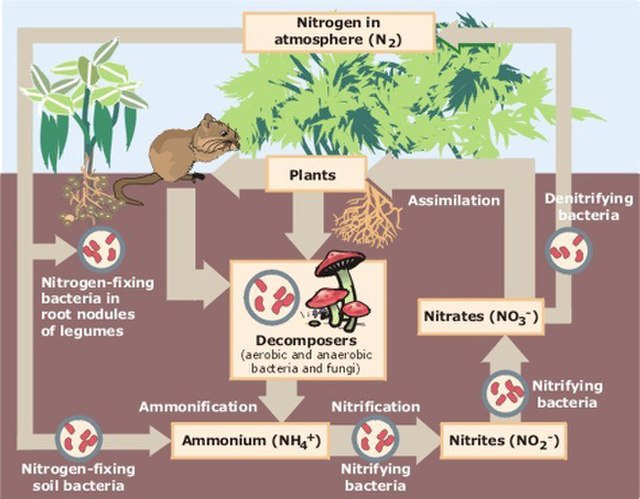Ecosystem ecology is the integrated study of living (biotic) and non-living (abiotic) components of ecosystems and their interactions within an ecosystem framework. This science examines how ecosystems work and relates this to their components such as chemicals, bedrock, soil, plants, and animals.
Figure 1. A riparian forest in the White Mountains, New Hampshire (USA).
Figure 3. Energy and matter flows through an ecosystem, adapted from the Silver Springs model. H are herbivores, C are carnivores, TC are top carnivores, and D are decomposers. Squares represent biotic pools and ovals are fluxes or energy or nutrients from the system.
Figure 4. Seasonal and annual changes in ambient carbon dioxide (CO2) concentration at Mauna Loa Hawaii (Atmosphere) and above the canopy of a deciduous forest in Massachusetts (Forest). Data show clear seasonal trends associated with periods of high and low NPP and an overall annual increase of atmospheric CO2. Data approximates of those reported by Keeling and Whorf and Barford.
Figure 5. Dynamics of decomposing plant litter (A) described with an exponential model (B) and a combined exponential-linear model (C).
An ecosystem is a system that environments and their organisms form through their interaction. The biotic and abiotic components are linked together through nutrient cycles and energy flows.
Flora of Baja California desert, Cataviña region, Mexico
Global oceanic and terrestrial phototroph abundance, from September 1997 to August 2000. As an estimate of autotroph biomass, it is only a rough indicator of primary production potential and not an actual estimate of it.
A freshwater lake in Gran Canaria, an island of the Canary Islands. Clear boundaries make lakes convenient to study using an ecosystem approach.
Biological nitrogen cycling








